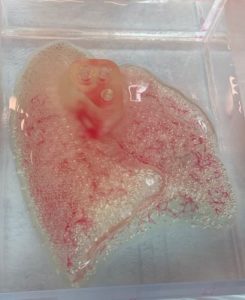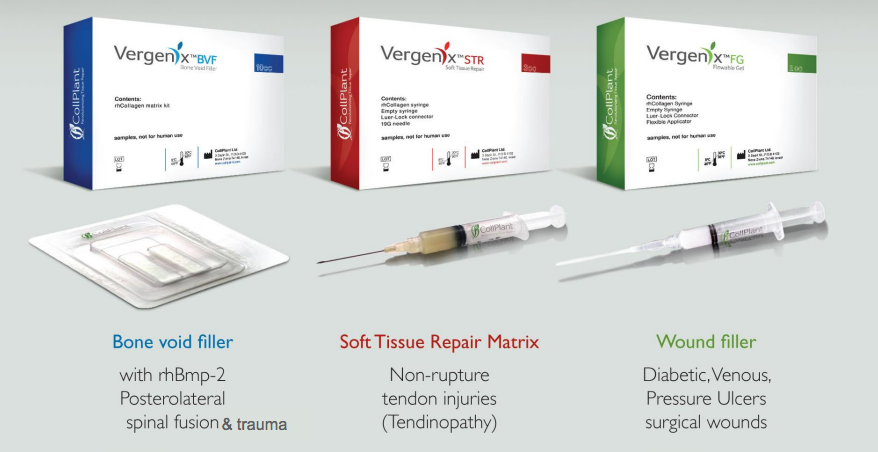3D Systems (NYSE:DDD) has announced that it is diving further into the bioprinting space, upon significant progress made by its partner United Therapeutics Corporation (NASDAQ:UTHR) and its subsidiary Lung Biotechnology PBC. Together, the companies have developed a method for quickly fabricating hydrogel scaffolds that are then perfused with living cells. The technology has shown such promising results for tissue engineering applications that 3D Systems has decided to invest much more into bioprinting.
 3D printed lung scaffold © 2020 United Therapeutics Corp.
3D printed lung scaffold © 2020 United Therapeutics Corp.The partnership between 3D Systems and United Therapeutics began in 2017 and, after three years of work, they were able to create a method for rapidly 3D printing full-size, vascularized lung scaffolds with micron-level detail. This resulted in 3D Systems’ development of an entire portfolio of bioprinters and biomaterials for, in the company’s words, “lung manufacturing.”
3D Systems calls the process “Print to Perfusion” and it involves using Figure 4 systems to 3D print “large, vascularized, highly detailed hydrogel scaffolds at rapid speeds” that are then permeated with living cells. The company’s Figure 4 system will be expanded to better address bioprinting and regenerative medicine. The company’s continuous digital light processing platform is a truly fast method for making organ scaffolds, as Figure 4 is able to 3D print complete objects in just minutes.
3D Systems co-founder, executive vice president and chief technology officer Chuck Hull said of these developments: “Over the last years as bioprinting and regenerative medicine have evolved, we’ve seen a growing need to place cells at high-resolution in a nurturing matrix to produce complex tissues. Precise 3D printing with hydrogels, followed by perfusion of cells into the printed scaffold is the best way to achieve this, and we are thankful our work with United Therapeutics has given us the opportunity to advance and perfect this technology.”
3D Systems suggests that the technology will not only apply to lungs, but other tissues, as well. This will see it pour more resources into programs associated with different applications in the space, as well as bringing additional experts onto its bioprinting team. It will also deepen its partnerships with Israel’s CollPlant Biotechnologies (NASDAQ:CLGN) and Belgium’s Antleron.
 CollPlant rhCollagen-based medical products. Image courtesy of CollPlant.
CollPlant rhCollagen-based medical products. Image courtesy of CollPlant.CollPlant’s proprietary recombinant human collagen (rhCollagen) BioInk was crucial in the lung printing project with United Therapeutics and its organ manufacturing and transplant subsidiary, Lung Biotechnology PBC. The company is already heavily involved in the bioprinting space since at least 2016, most recently working with United Therapeutics on 3D printing kidneys. With 3D Systems handling the 3D printers and CollPlant the BioInks, the partners will be able to develop tissue and scaffold bioprinting processes for third parties.
In 2019, 3D Systems also began to collaborate with Antleron, which combines 3D printing, bioreactors and artificial intelligence to transform cells into biotherapeutic solutions. The exact nature of their partnership is a bit clouded in marketing-speak, but involves the use of 3D Systems’ ProJet MJP 2500 and Figure 4 3D printers, as well as its materials and software. The ultimate goal is to “make 3D printing an integrated part of modular and digital factory-of-the-future solutions to enable sustainable and personalized manufacturing of cell & gene therapies, vaccines, tissues, and organs.”
“The progress that Chuck Hull and his team have made over the last three years, in collaboration with the Team from United Therapeutics, has been absolutely remarkable. Through unique developments in new printer hardware, software, and biomaterials technology, they have laid the foundation needed for accelerated commercialization of bioprinting at 3D Systems,” said 3D Systems president and CEO Jeffrey Graves, “Taking a strong application focus we will now expand our commercialization efforts in this nascent industry, which we believe will experience significant growth over the next decade. We expect these efforts to bring substantial benefits to the healthcare patients in critical need, both through direct applications within the human body, as well as in accelerating the development of drug therapies in the pharmaceutical industry. We anticipate regenerative medicine to be an exciting growth driver for our healthcare business over the next decade.”
3D Systems has an established reputation in the medical field, which Vyomesh Joshi highlighted during his tenure as the firm’s CEO. This is embodied in its Colorado-based healthcare facility, which not only 3D prints dental and medical devices but also develops its virtual surgical planning technologies. With a robust bioprinting portfolio, the company will be able to move even further into the digital medicine space. Bioprinted organs and tissues will allow for testing and drug development that don’t rely on animal test subjects.
 Human vasculature model created using Print to Perfusion process. Image courtesy of United Therapeutics.
Human vasculature model created using Print to Perfusion process. Image courtesy of United Therapeutics.Given the market turnaround that has already occurred under Graves, it’s hard not to think that this news won’t also cause a stir for 3D Systems. As Vice President of Research for SmarTech Analysis Scott Dunham recently noted, this time in the 3D printing industry feels akin to the excitement that percolated circa 2014. Whereas desktop machines were driving most of the attention then, industrial 3D printing is doing so now. Bioprinting has made such progress since then that we have an entire map dedicated to this subsegment. My hope is that, as good as this news may be for 3D Systems, it might actually mean 3D printed organs may be ready for transplant sooner rather than later.
For full transparency, I own a very small number of shares of 3D Systems stock.
Subscribe to Our Email Newsletter
Stay up-to-date on all the latest news from the 3D printing industry and receive information and offers from third party vendors.
You May Also Like
3D Printing Financials: voxeljet’s Financial Reshuffle
In a series of significant announcements made on March 13, 2024, voxeljet (Nasdaq: VJET) has revealed a plan to reshape its financial structure and strategic direction. As part of these...
Japanese Aerospace Leader Invests in 3DEO and Its Metal 3D Printing Tech
Los Angeles-based metal 3D printing startup 3DEO has announced a key investment from IHI Aerospace Co., Ltd. (IA), a subsidiary of Japanese manufacturing leader IHI. This collaboration marks a significant...
2025 Renault 5 E-Tech Electric Is Latest Car with 3D Printed Accessories
Due to the required numbers, additive manufacturing (AM) has struggled to make significant inroads into vehicle interiors in meaningful numbers—at least as far as public knowledge is concerned. Typically an...
Interview: NAGASE Facilitates AM Adoption with EMPOWR3D 3D Printing Brand
The additive manufacturing (AM) market is entering a new phase in which large companies from outside of the segment have entered and begun consolidating. In reality, this trend has been...































